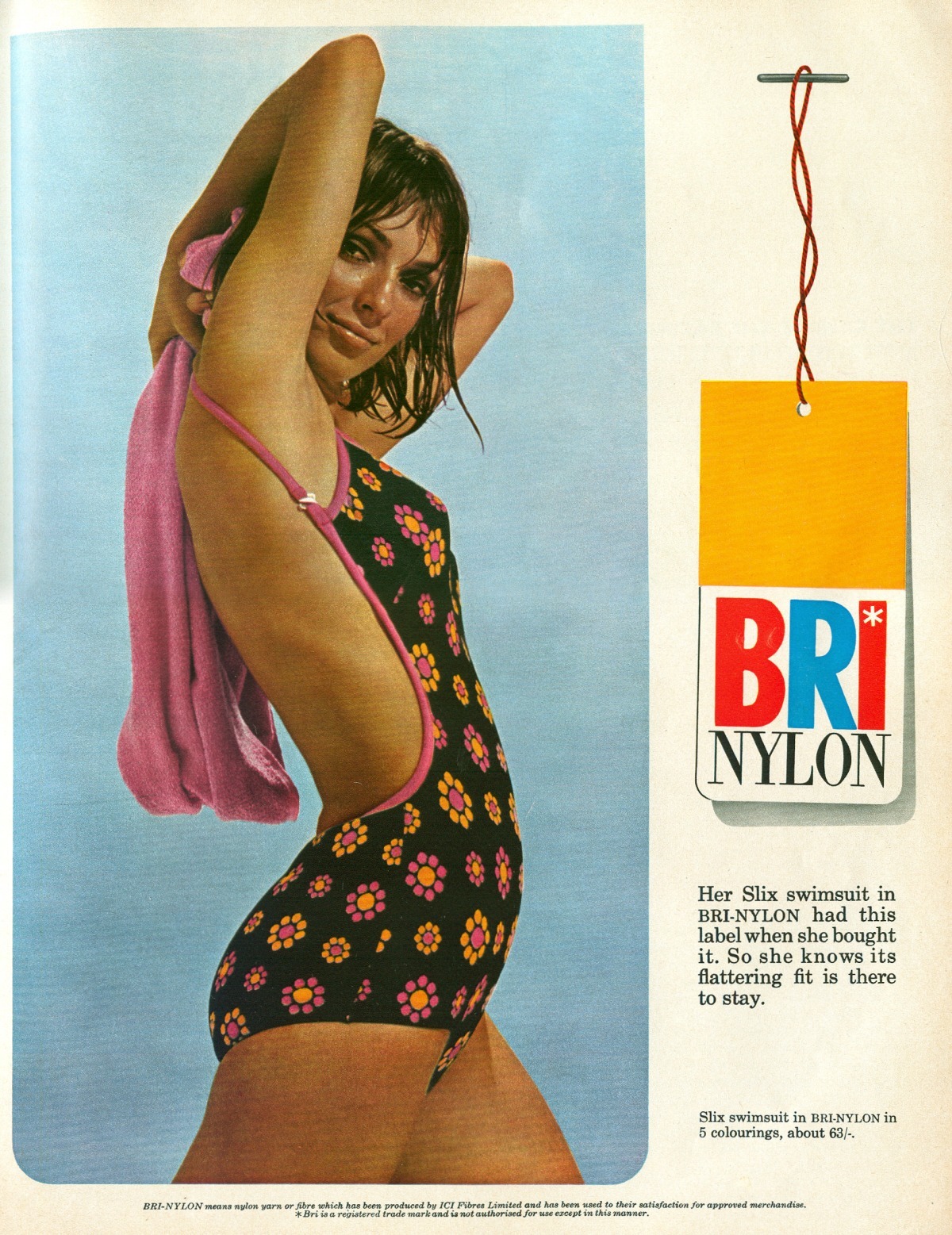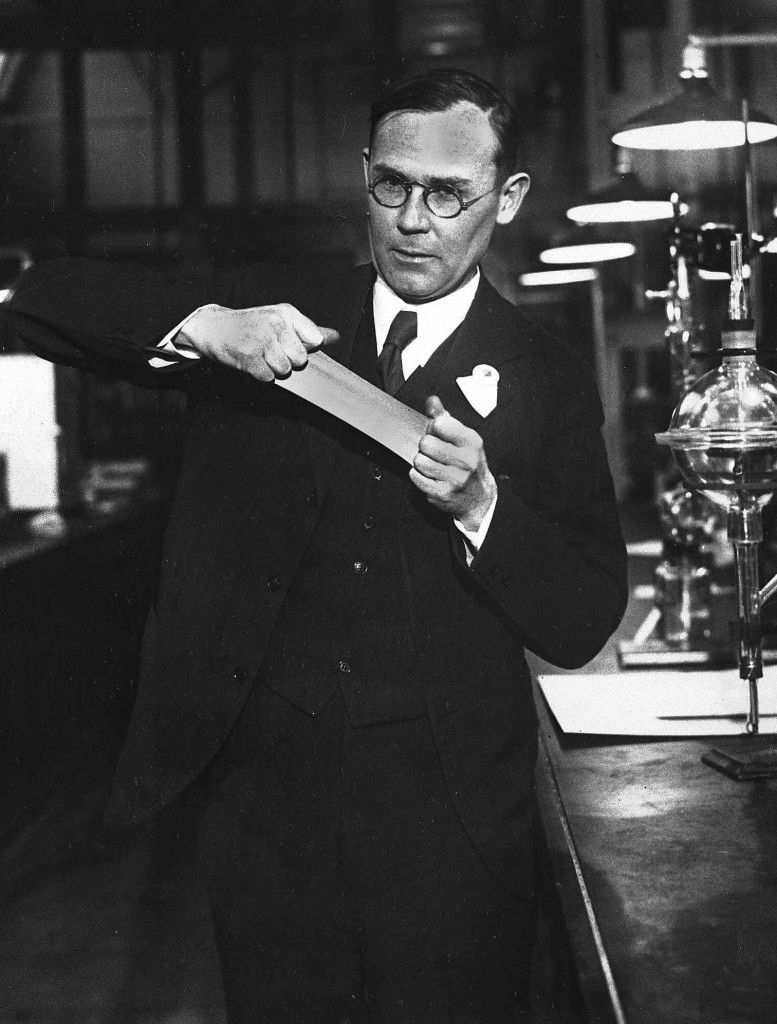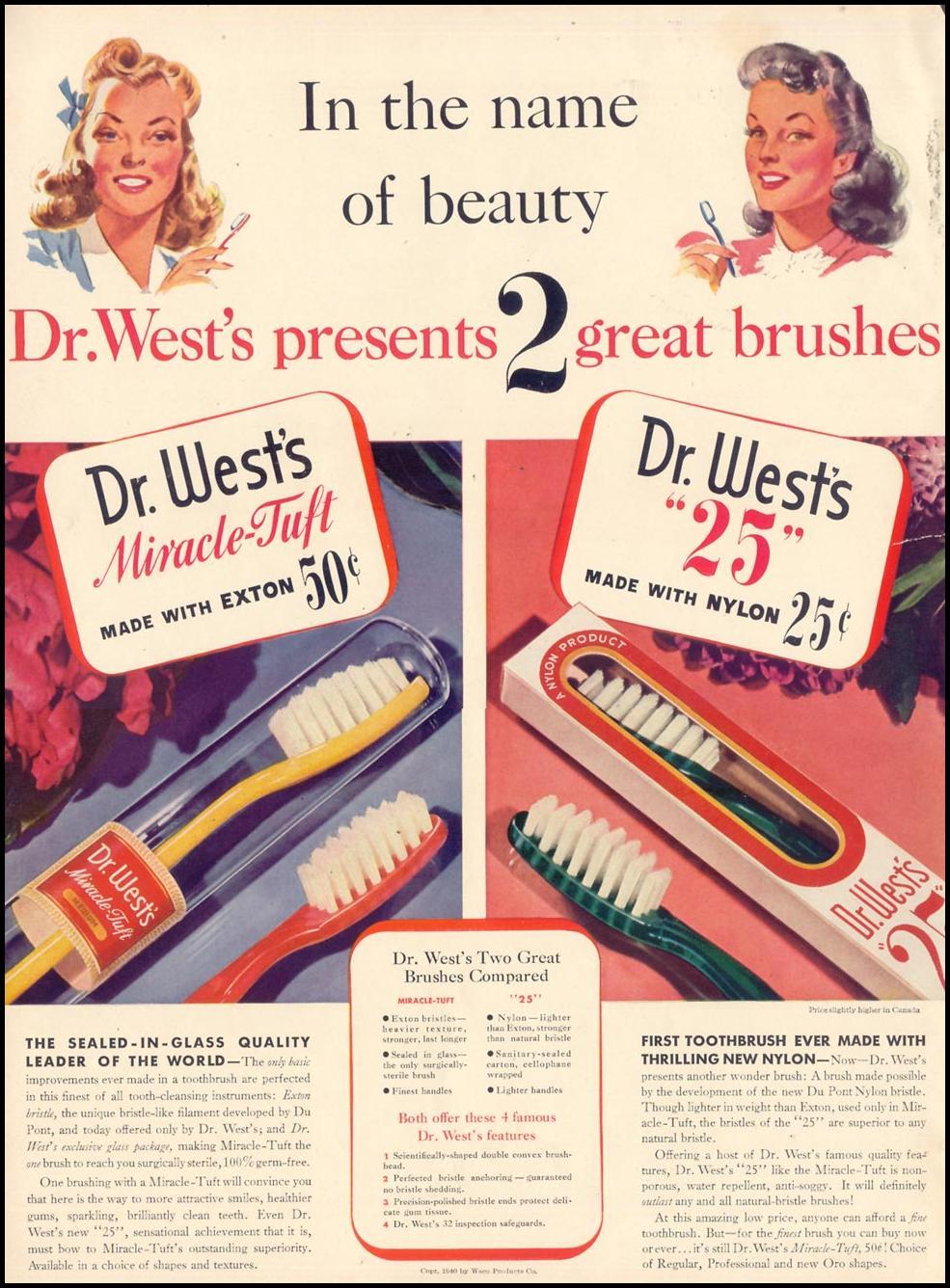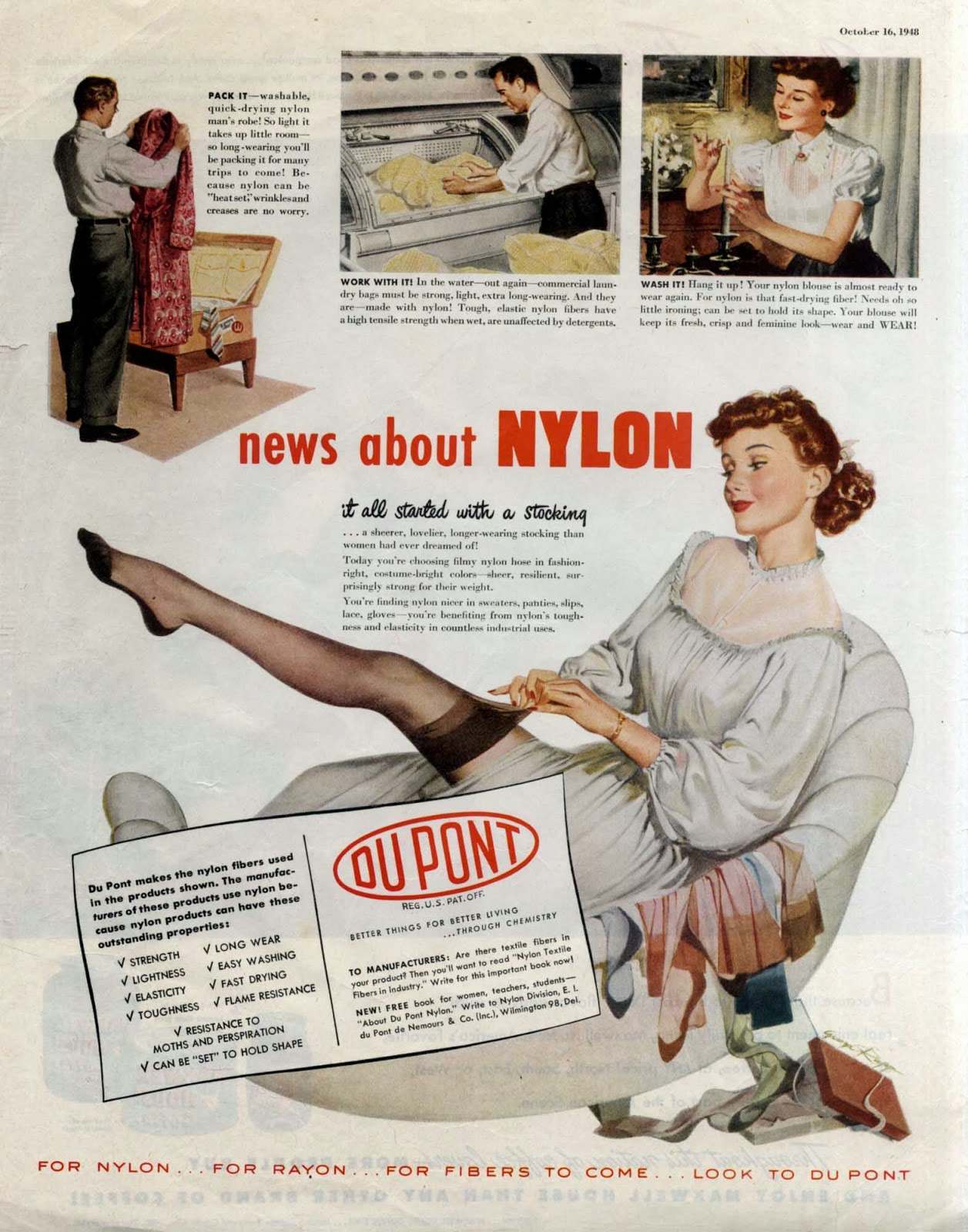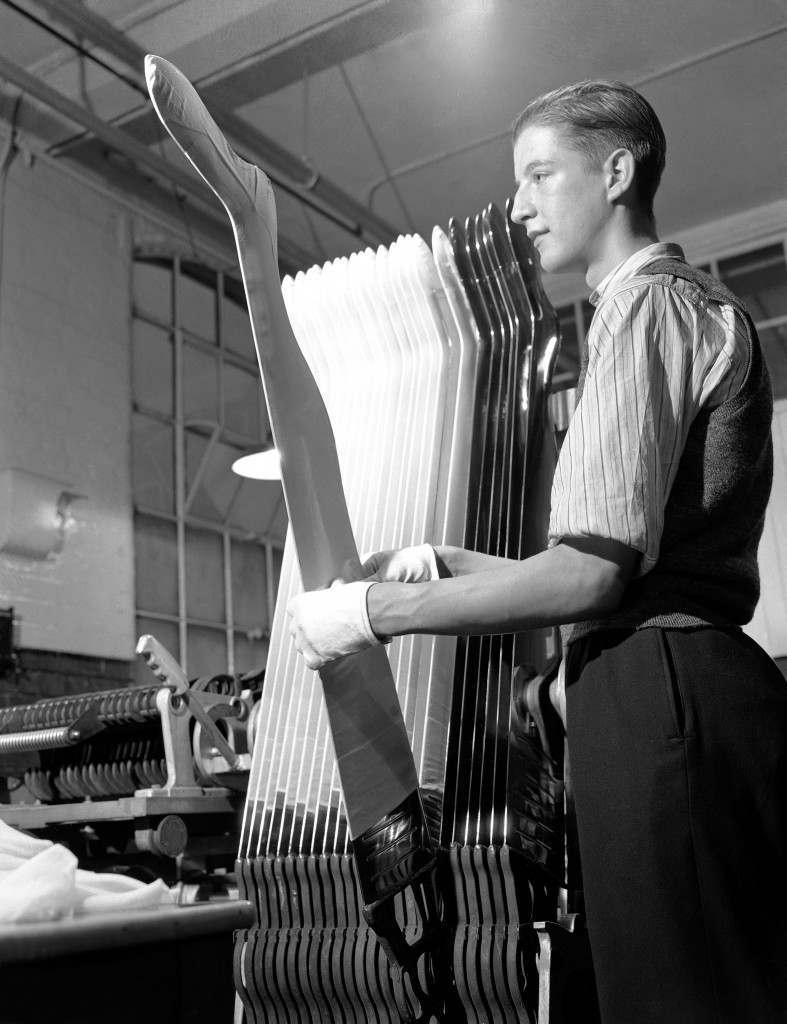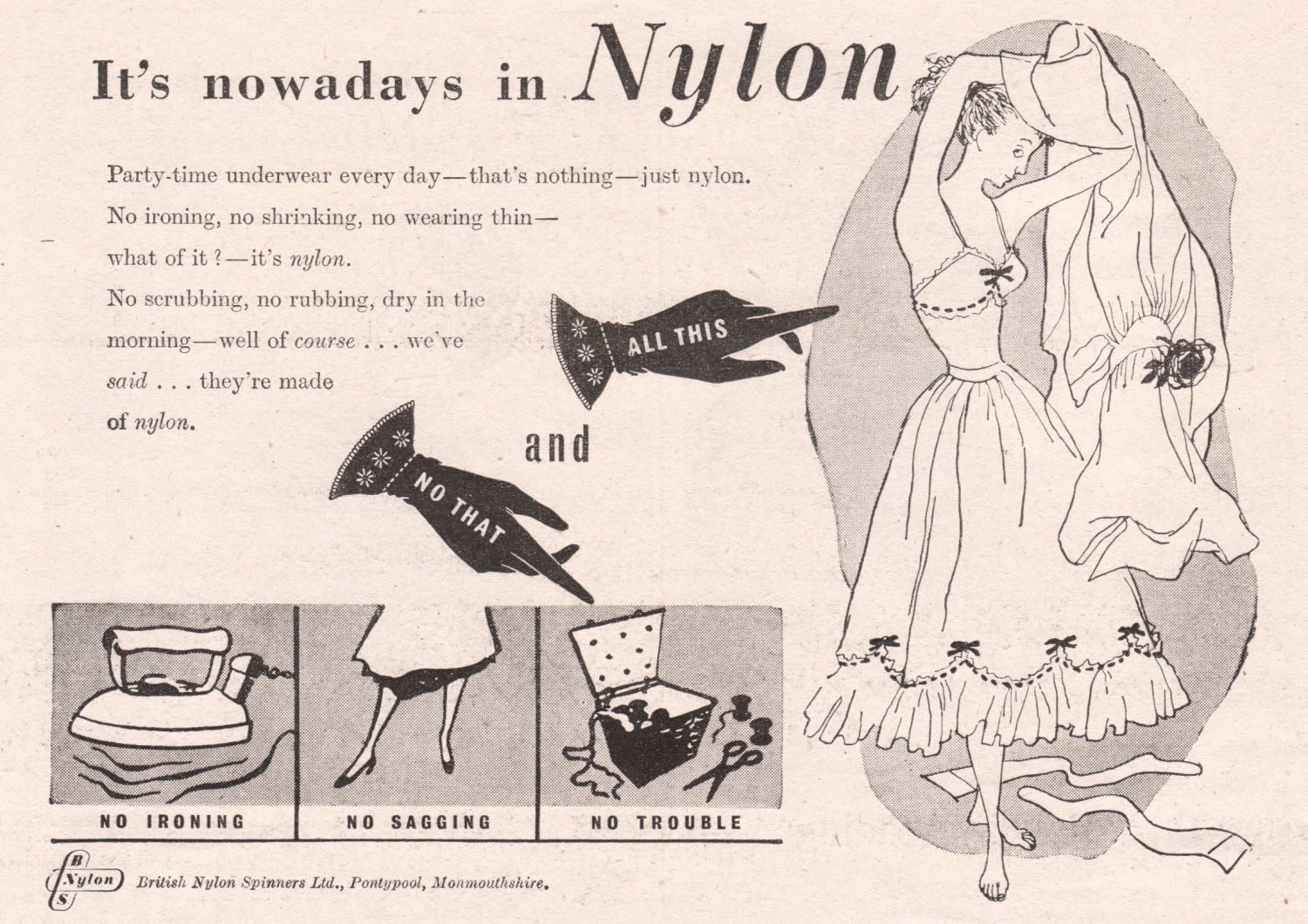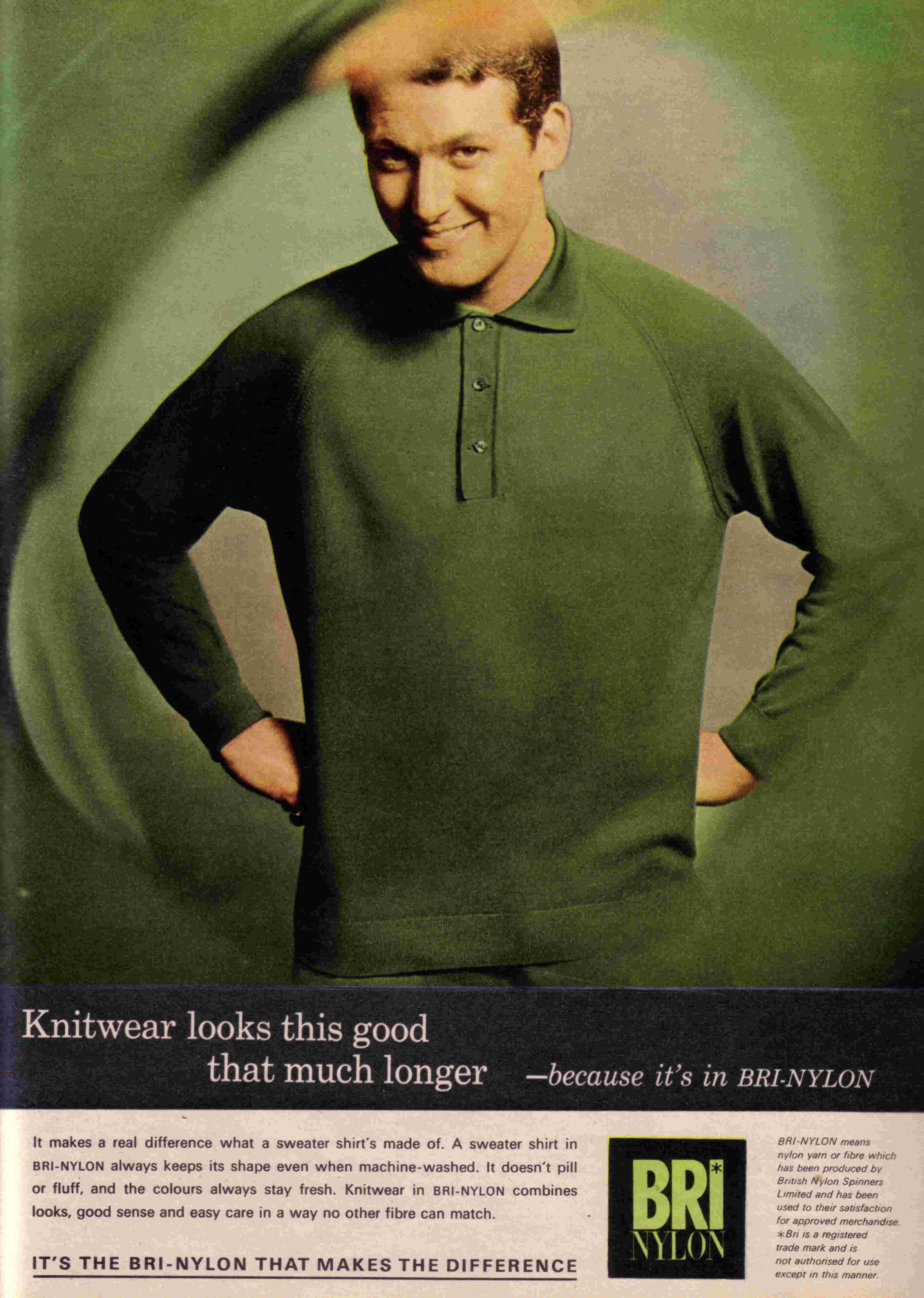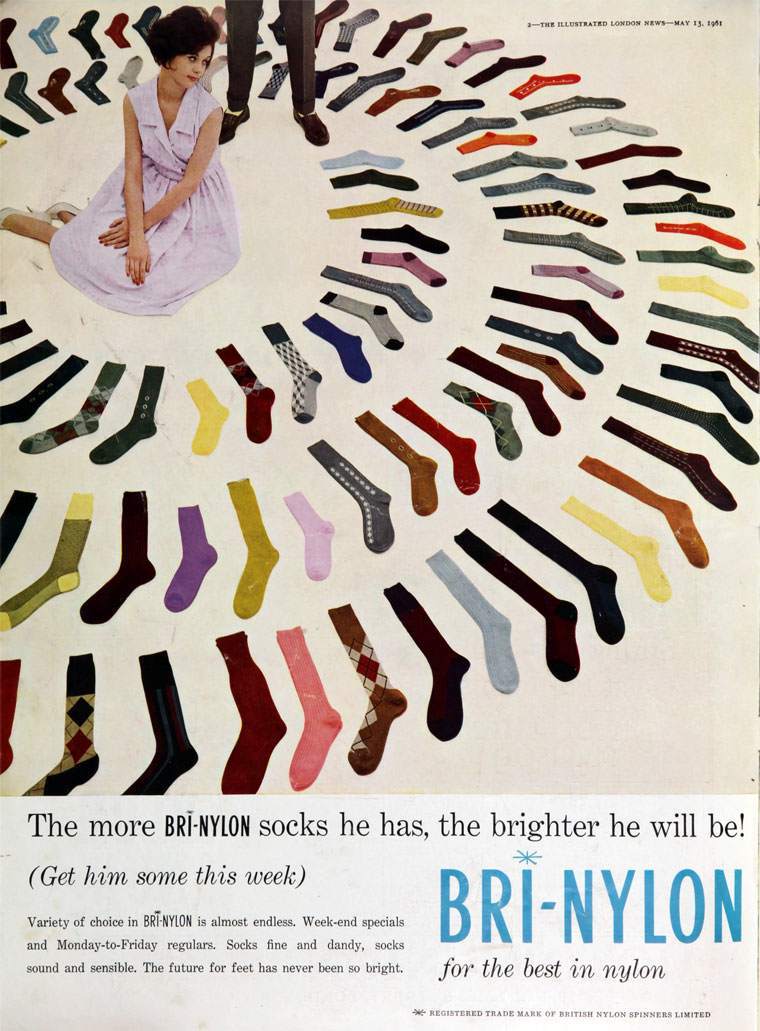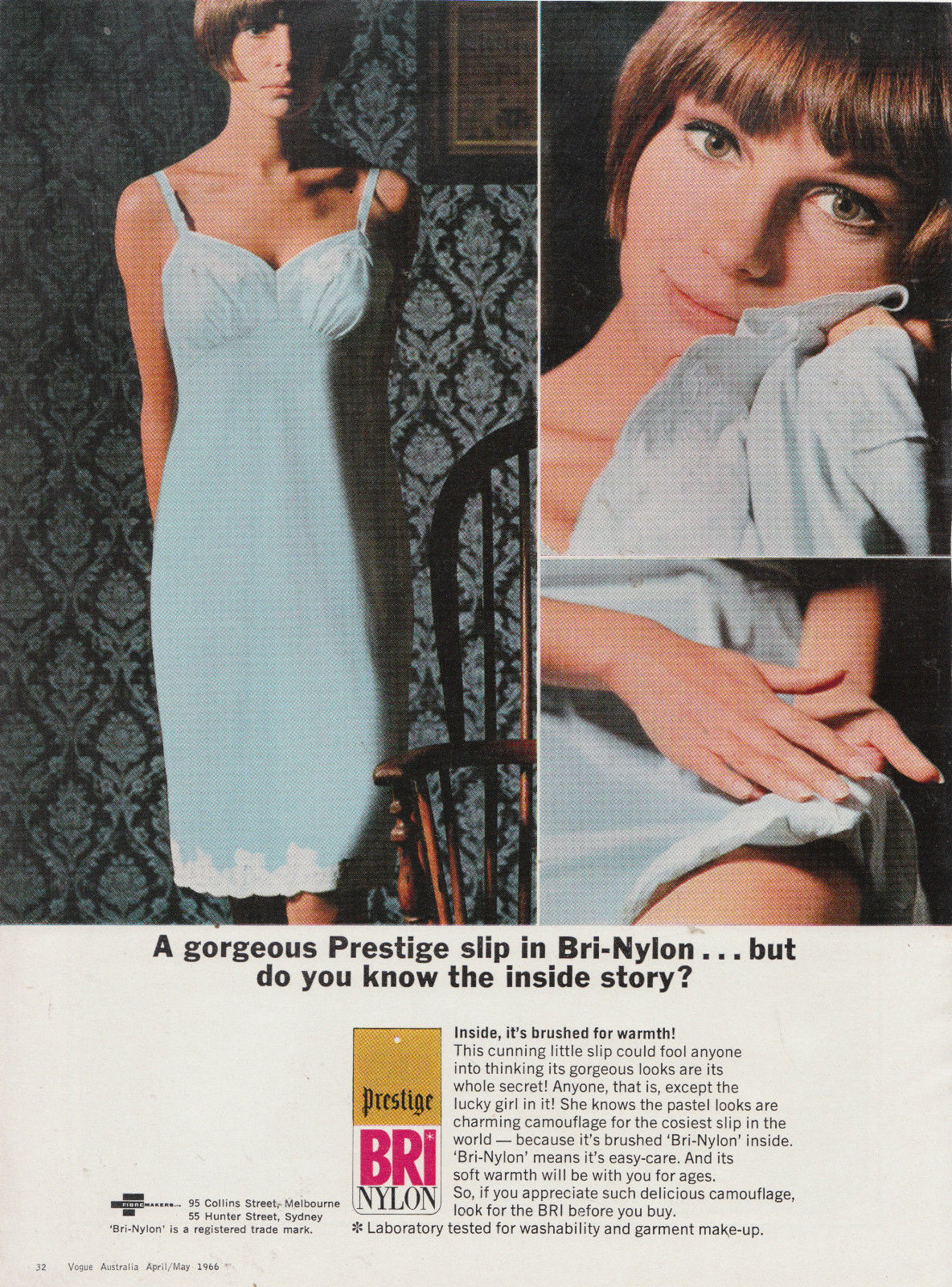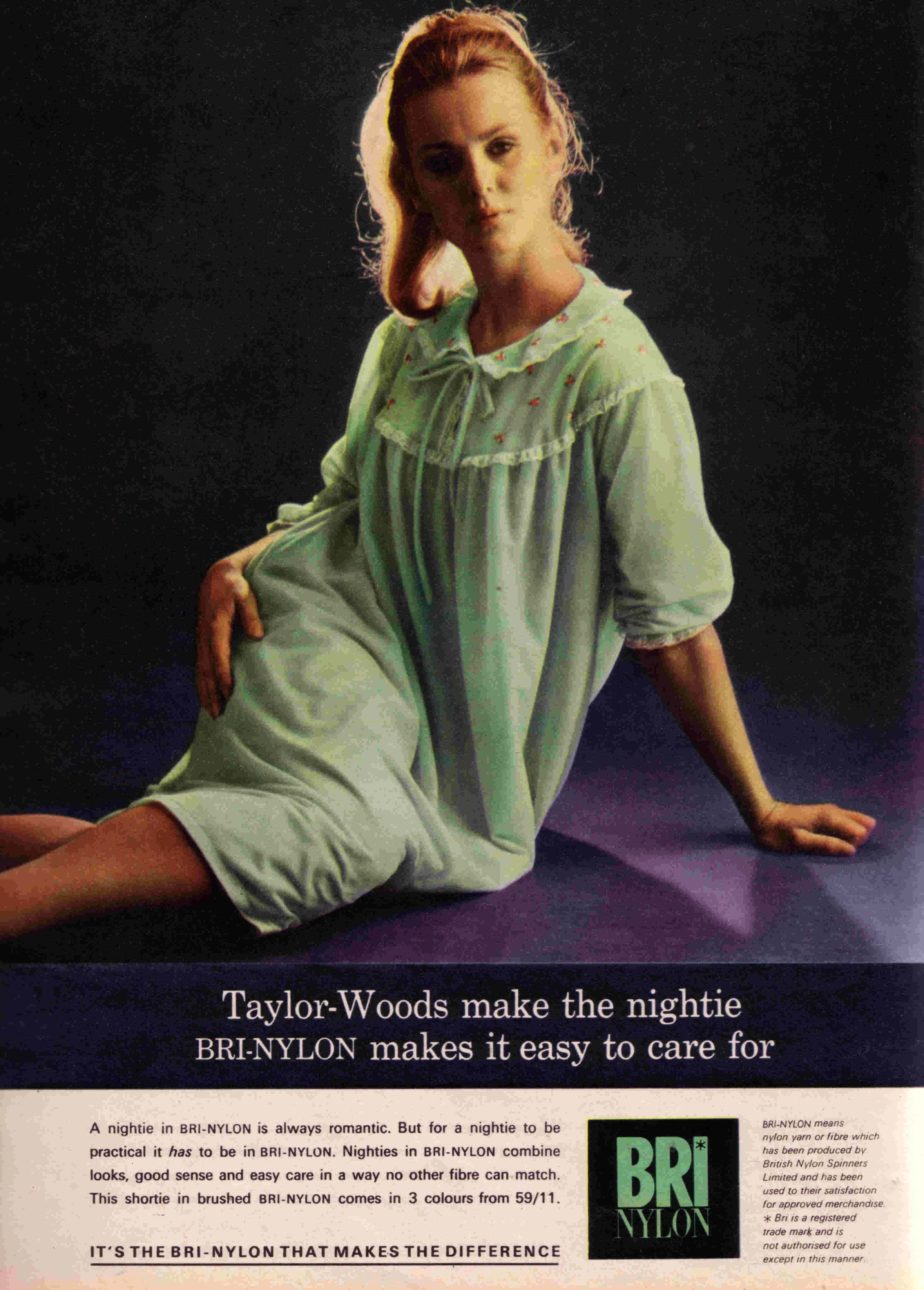Almost eighty years ago in a DuPont laboratory in Delaware, a team led by a brilliant scientist called Wallace H Carothers discovered what would eventually be called Nylon. Tragically, he never knew that this discovery of the silky thermoplastic polymer changed the face of fashion for ever. Although Nylon was first used commercially in a nylon-bristled toothbrush in 1938, it was quickly followed by its use in women’s stockings in 1940 after being introduced as a fabric in the 1939 New York World’s Fair. In a 1938 Fortune Magazine article it was written that:
Nylon breaks the basic elements like nitrogen and carbon out of coal, air and water to create a completely new molecular structure of its own. It flouts Solomon. It is an entirely new arrangement of matter under the sun, and the first completely new synthetic fiber made by man. In over four thousand years, textiles have seen only three basic developments aside from mechanical mass production: mercerized cotton, synthetic dyes and rayon. Nylon is a fourth.
DuPont were exceedingly successful at exploiting their new product and it was only in 1939 that ICI, in Britain, took out a licence to manufacture nylon fibre. They quickly realised they needed the expertise of an experienced textile firm and they formed a partnership with Courtaulds and in January 1940 the name British Nylon Spinners was created. The Nylon polymer and the initial extrusion machinery used in the spinning had to be imported from the United States. At the time the product was badly needed to make a silk substitute for parachutes, especially after Japan, which was where most of the silk came from, entered the war.
In 1946 British Nylon Spinners had to open up new markets and fast. By that time women had been introduced to Nylon stockings – “Nylons” when American GIs had brought them over to Europe. During the forties and fifties nylon became the prestigious new material and the image presented to the buying public was of modernity, hygiene and the latest, sophisticated innovation. In 1958 the trademark name Bri-Nylon was established and for many people the name has connotations of the 1960s a time of relative prosperity, hopefulness and fashionable modernity.
Although his discovery became one of the great inventions of the twentieth century, Wallace Carothers never saw any of this success. In 1936 he had married Helen Sweetman – a colleague at DuPont and in the same year he was elected to the highly prestigious National Academy of Sciences. From the outside his future looked nothing else but rosy. Another scientist at DuPont called Julian Hill had once been shown by Carothers a small amount of Cyanide connected to his watch-chain and was told that he could list all the famous scientists that had taken their own life. In April 1937, Carothers, who had suffered for many years with extremely bad bouts of depression, joined his morbid list. In a Philadelphia hotel room he drank a deadly cocktail of lemon juice laced with his potassium cyanide. His wife was two months pregnant and Wallace Carothers only child Jane was born seven months after he died.
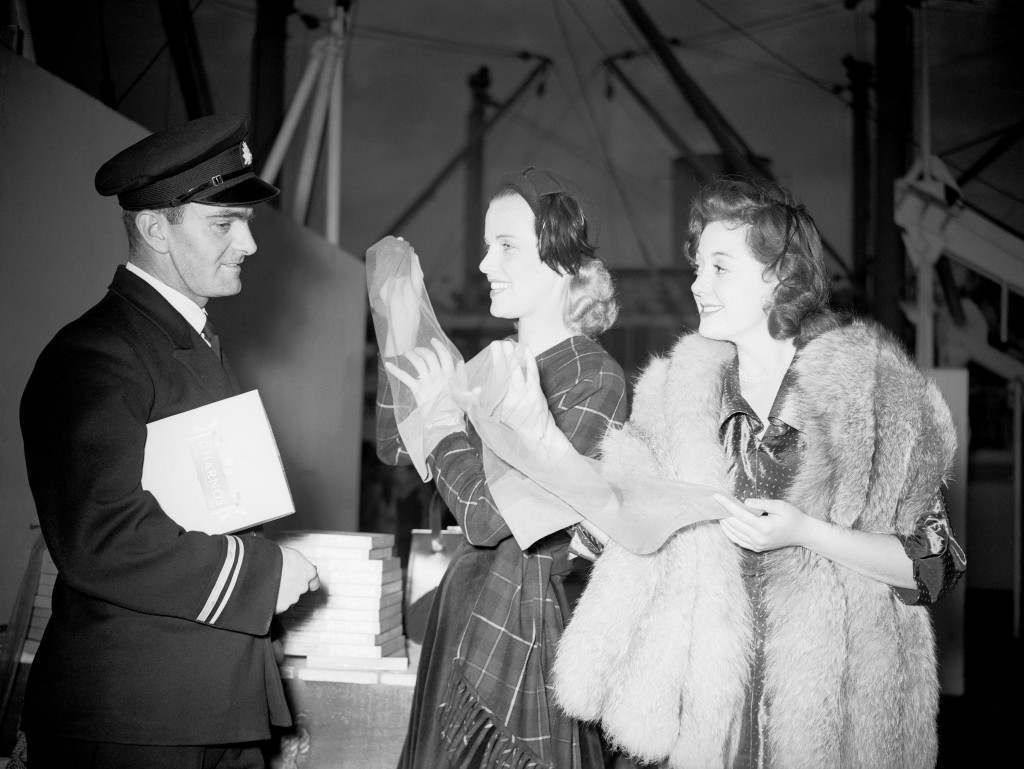
Film actresses Honor Blackman and Lana Morris run their fingers through the new nylon stockings becoming available in the UK, 1949.
Would you like to support Flashbak?
Please consider making a donation to our site. We don't want to rely on ads to bring you the best of visual culture. You can also support us by signing up to our Mailing List. And you can also follow us on Facebook, Instagram and Twitter. For great art and culture delivered to your door, visit our shop.
